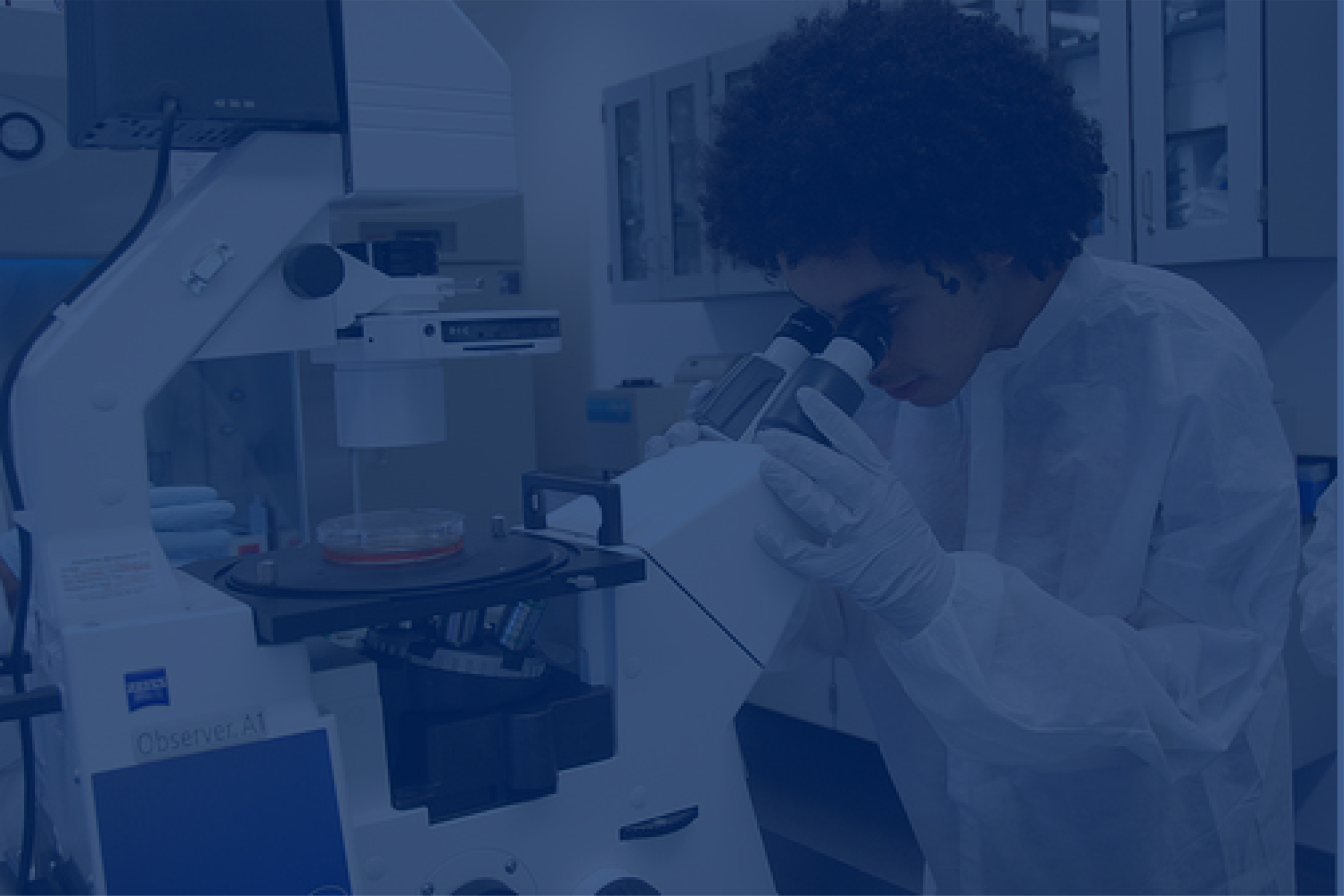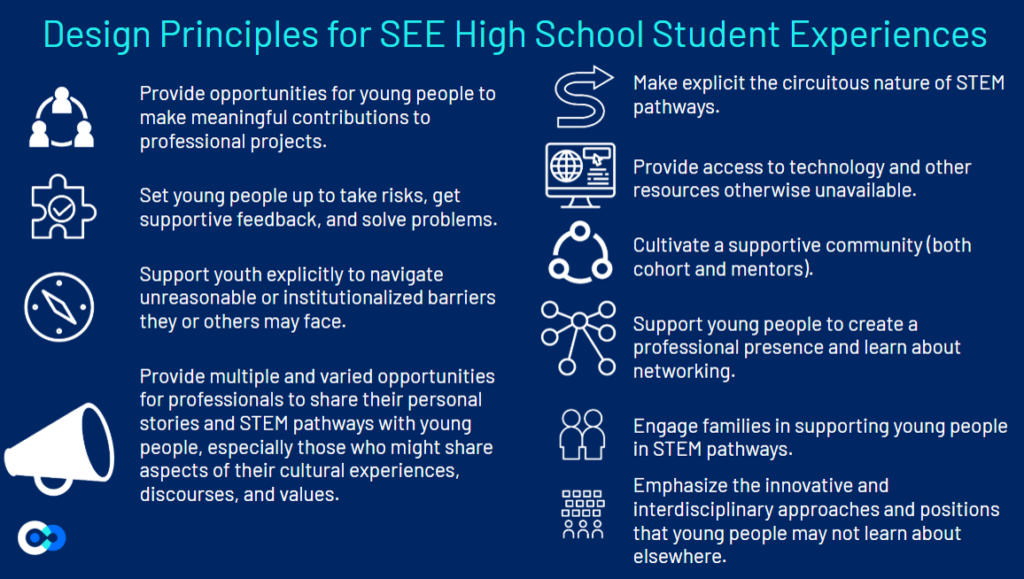Student Program Design Principles

All high school student experiences are guided by ten design principles.
These principles, shown in the figure to the right, are further divided into 5 main goals for all high school student experiences.  While the experience itself may change (e.g. wet bench research versus computational workgroups versus food security ambassadorship) the main goals and outcomes are similar. These goals are to:
While the experience itself may change (e.g. wet bench research versus computational workgroups versus food security ambassadorship) the main goals and outcomes are similar. These goals are to:
- LEARN about systems,
- DEVELOP professional skills,
- EXPLORE new topics,
- COLLABORATE on team projects and
- NETWORK socially and professionally.
The intended outcomes of all of our experiences are to build on students’ STEM interest, proficiency, and 21st Century Skills and to support deeper learning and participation in STEM. This includes improving STEM identity, confidence, and social capital. For more information on the benefits of SEE programming please view our Impact webpage. For more on the specifics of our student programming, please see our For Students page and the many linked pages within.

